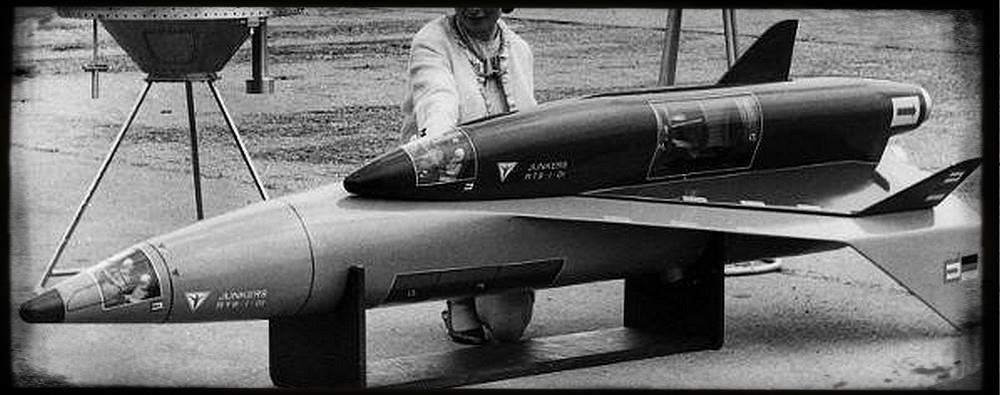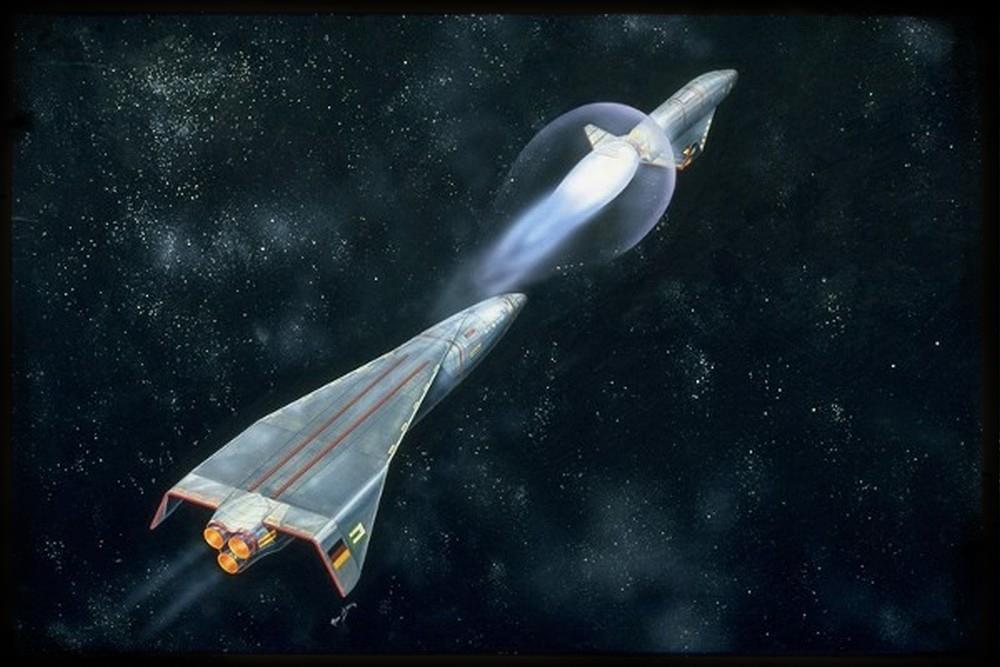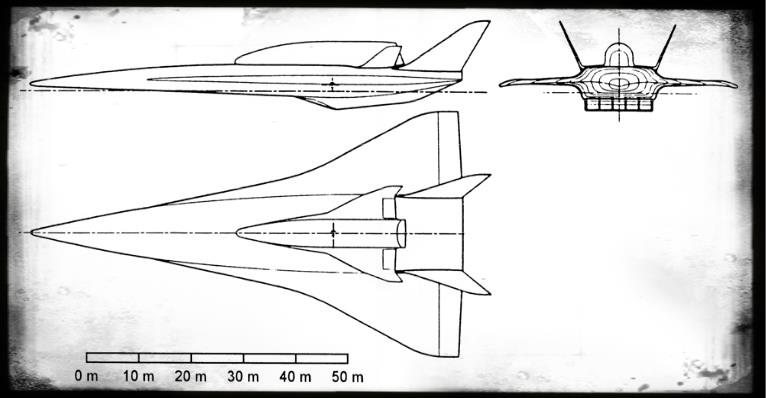Junkers GmbH RT (Space Transporter, Saenger)
see also RT-8 Museum Exhibits
Reusable Space Transporter, 1961

Junkers RT-8-01 Modell
The Junkers RT (Raumtransporter / Space Transporter) was an early Space Shuttle craft, which was developed by the West German Junkers GmbH in the sixties. It was based on the suborbital bomber "Silbervogel", which was developed by Eugen Saenger during the thirties. Eugen Saenger Joint the West German Junkers GmbH in 1960 and continued his work on the Silbervogel under the Designation Junkers RT Space Transporter. The financial backing of this development Project came from the West German Government, which established the "German National Space Programme" for the Space Studying Project No. 623 in 1962 and the "EUROSPACE Programme" in 1963.
The Junkers RT-8, also called "Saenger I", was a sled-launched two stage space plane. The design work was started in July 1961. Probably some prestudies RT-1 to RT-7 existed before. The RT-8 sled was powered by a steam rocket and took the RT-8 plane over a distance of 3 km, where the airbreathing LH2 engines ignited. The three engines of the first stage offered a power of 150 tons at sealevel and took the second stage up to 30km altitude in 150 seconds. Here both stages separated and the manned stage one was flown back by a Pilot to the ground. The first stage vehicle had a length of 80m and Delta wing with a span of 40m. The wing was shoulder mounted to the fuselage.
Following the Separation the stage two single Lox/LH2 engine were started. The second stage maneuvered in the suborbitals or climbed up to an Orbit of 300km altitude. The second stage had a length of 31m and a Delta wing span of 12m. The orbiter's wing was low mounted. The second stage was capable to be manned by two astronauts called HORUS (Hypersonic Orbital Upper Stage) or to be used as an unmanned Cargo ship called CARGUS. The CARGUS did not have any wings as it was not intended to return this ship to the ground.

The Junkers Study continued even when Eugen Saenger suddenly died in February 1964. Most work was done to drop the acceleration sled. Some studies saw a take-off of the Saenger from a Boeing B52 bomber aircraft. Also VTO-concepts were studied. In October 1965 the Junkers Team proposed a second take-off solution with the RT-8-02, which did no longer use the acceleration sled, but was designed for a vertical take-off. However, in 1966 the German National Space Programme and the EUROSPACE Programme expired and no more funding was available for the RT-8-02 studies.
In 1969 the Junkers GmbH was absorbed by Messerschmitt-Bölkow-Blohm. From 1971 to 1974 again the horizontal take-off concept of Saenger was investigated before the whole Programme was stopped.
Messerschmitt-Bölkow-Blohm revitalized the Saenger Project in 1985. The new "Saenger II" Project brought the original Junkers RT-8-01 Project up to the prototype Level. However, before Building a prototype the Project was stopped again in 1994.
Technical Data:
| Aircraft | year | engine | length in m | span in m | wing area im sqm | net weight in kg | T/O weight in kg | seats | speed in m/s | range in km |
|---|---|---|---|---|---|---|---|---|---|---|
| Ju RT-8 | 1961 |
|
21,0 |
9,0 |
|
|
21000 |
|
|
|

Weblinks:
- astronautix.com - RT8-01 Description and Data
Literature:
introduced Aug 2017
http://hugojunkers.bplaced.net/
contents last updated 25.08.2017

